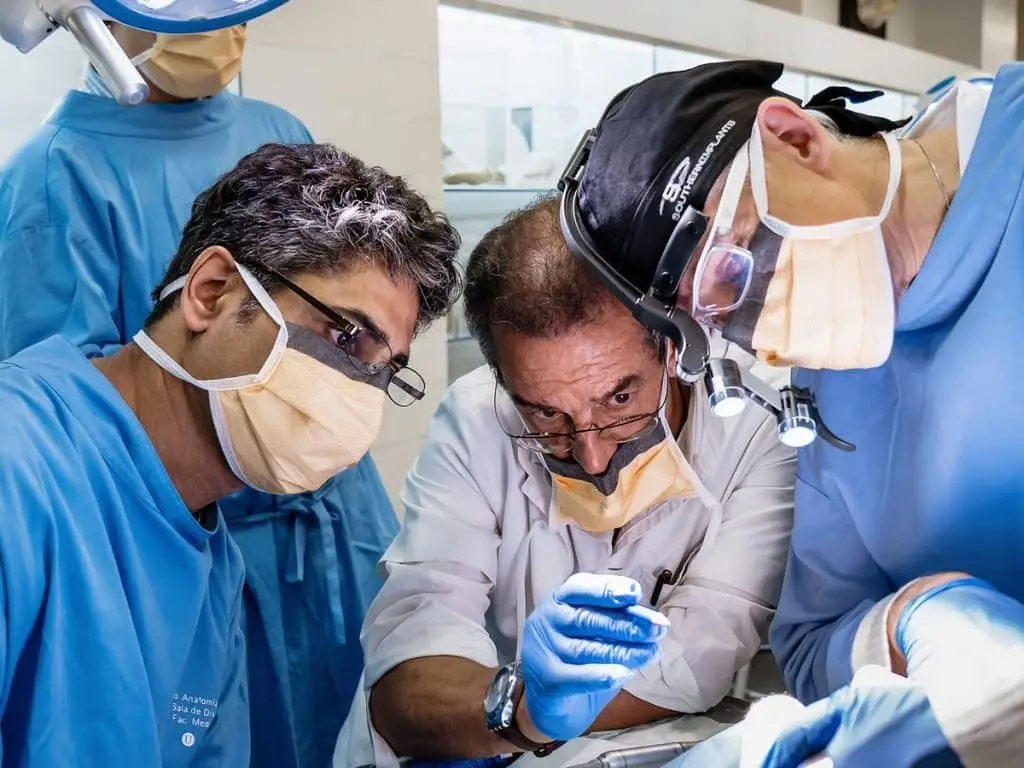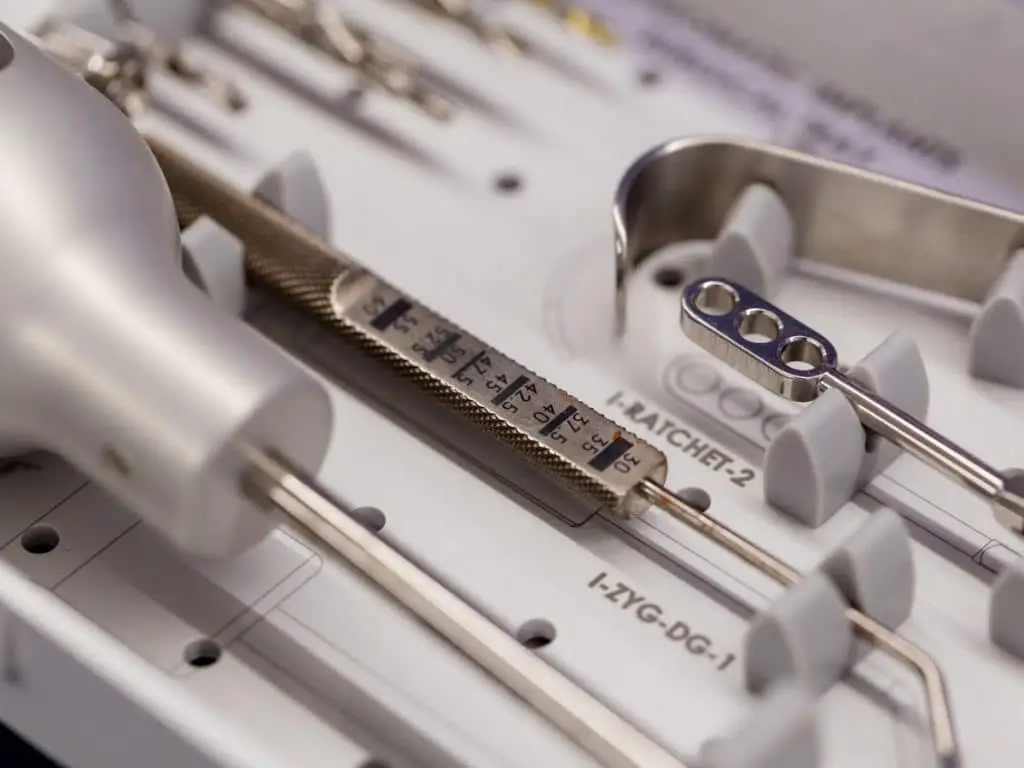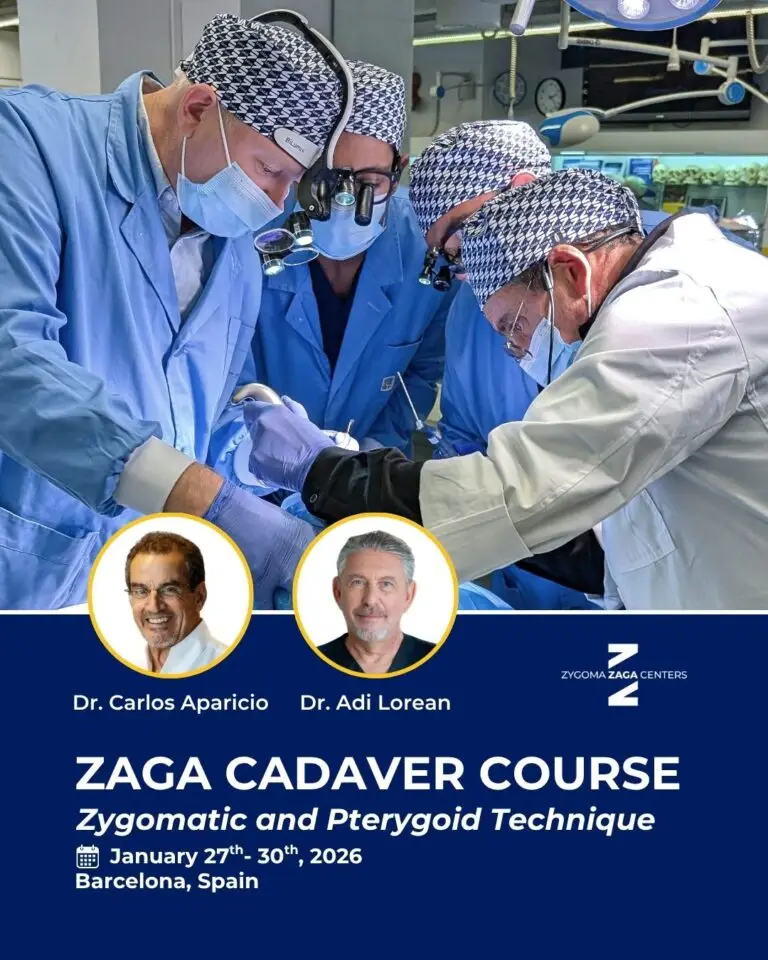
Aparicio, C., Ouazzani, W., Aparicio, A., Fortes, V., Muela, R., Pascual, A., Codesal, M., Barluenga, N. and Franch, M. (2010), Immediate/Early Loading of Zygomatic Implants: Clinical Experiences after 2 to 5 Years of Follow‐up. Clinical Implant Dentistry and Related Research, 12: e77-e82. doi:10.1111/j.1708-8208.2008.00134.x
Any implant dentist will know that a patient who arrives with severe absorption of the maxilla is unlikely to be an easy case. At best, treatment is tricky and at worst the problem may even preclude the use of dental implants altogether, due to a distinct lack of bone support needed for implant integration. Of course, there are several tried and tested treatment options that can help. One is bone grafting, while the other involves the placement of zygomatic implants. Originally the zygomatic implant was developed by Brånemark as a way of giving dental rehabilitation to patients who had experienced extensive defects in the maxillary region. These may have been caused by tumor restrictions, congenital defects and/or trauma. Instead of anchoring directly into the jaw, the bone of the zygomatic arch (cheekbone) was used to anchor a long-fixtured implant in place. Because the zygomatic (cheek) bone is dense, wide and doesn’t atrophy, it has the capacity to safely hold an implant without the need for bone grafting.
For several decades since its development, the zygomatic implantation process has allowed skilled clinicians to bypass areas of the upper mouth and instead place the implant into the stronger, more secure bone tissue of the zygomatic arch. Moreover, clinical results have shown that this method works for many patients facing maxillary issues. In one study, for example, 1143 zygomatic implant cases showed a survival rate of 98.4% after a series of follow-ups ranging from 6 months to 10 years. However, despite these impressive results, the reality was that most patients still had to undergo a 6-8 month healing time prior to loading.

Changing trends in zygomatic implant placement
Nowadays, of course, the trend is to reduce or even eliminate healing periods using tried and tested early or immediate loading techniques. So, are the clinical experiences of the immediate-early loading of zygomatic implants equally as impressive? The advantages for the patient, after all, are that they get an instant aesthetic appearance, plus immediate function with only one surgical procedure. Back in 2008 Dr. Carlos Aparicio, a leader in the field of zygomatic implants, had just wound up a 5- year experiment on early/immediate loading of zygomatic implants. The results were then published in a clinical paper.
25 patients were fitted with a total of 47 Nobel Biocare zygomatic implants and 129 regular implants. The aim of the study was to document the experiences of these patients over a 2-5 year period. Each patient had either total or partial edentulism in the maxilla and all implant processes warranted either immediate or early loading techniques. 19 of the 25 patients were immediately loaded while the remaining 6 patients were rehabilitated within 5 days. Finally, all patients were instructed on a soft diet for a 4-month duration and follow- up controls were performed at the 1, 4, and 12-month points and annually thereafter. Some patients were followed-up for 5 years, but all were monitored for at least 2 years. During each follow-up, processes were put in place to check for good oral hygiene as well as thorough assessments of prosthesis stability, bone tissue health, and signs of mechanical complications. What’s more, all bridges were removed after a 1 year period so that implants could be properly and thoroughly checked.
So what were the results?
Immediately after the implant process, most patients developed some degree of post-operative swelling and pain, which was deemed to be controllable using over the counter analgesics. In all cases, this was considered normal. After 2 years of follow-up appointments, it was found that all zygomatic and regular implants were functioning normally and remained sturdy and stable, thus giving an impressive cumulative survival rate (CSR) of 100%. This was also the case for those remaining patients who were followed up for 4 years. It was only after 52 months that one regular implant placed in the pterygoid plate failed, bringing the overall CSR down to 99.2%.
After 2 years, a cumulative survival rate of 100%
Some mechanical complications were noted, however. Anterior teeth fractured in 5 patients with metal resin and metal porcelain bridges. Furthermore, one abutment screw of a zygomatic implant fractured after 3 years of wear in one particular patient. Nevertheless, as only one regular implant and no zygomatic implants were lost up to a 5 year period, these results are very much in line with other clinical findings. Bedrossian et al, for example, reported zero losses for 28 zygomatic implants and 55 routine implants in 15 patients over a 12 month period. While Davo et al reported no losses from 36 zygomatic implants but recorded 3 losses from 68 conventional implants during a follow-up period of 29 months. While it’s true that all studies are relatively short-term investigations, signs do show that immediate loading is a viable treatment modality in cases when zygomatic implants are required. In fact, according to the Foundation for Oral Rehabilitation (FOR), this form of treatment modality really should be the gold standard rather than the exception.
The bottom line

Companies are at present developing tools such as specialist surgical guides and navigation systems so that the placement of zygomatic implants can be made easier. This allows practices to make the transition from general led anesthesia to local anesthetics. In addition, enhancements in the anatomy-guided approach to zygomatic implants, including new and improved zygomatic implant design, make surgery less invasive, less problematic, and ultimately more successful; thus further increasing implant success rates.
Not so long ago, zygomatic implantation was seen as a complex and risky option for edentulous or partially edentulous patients, but within a decade or so, thanks to the dedication of certain experts it’s not only become the best option for some patients but the expected one.

